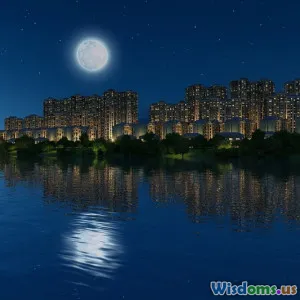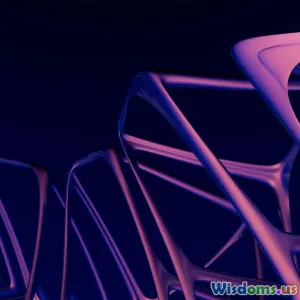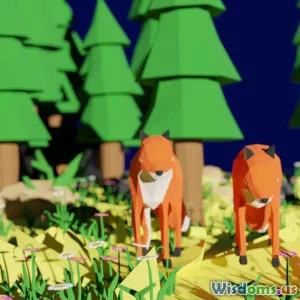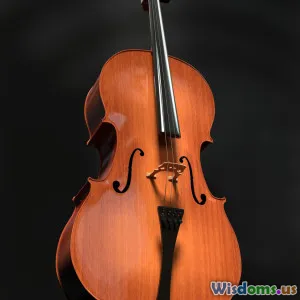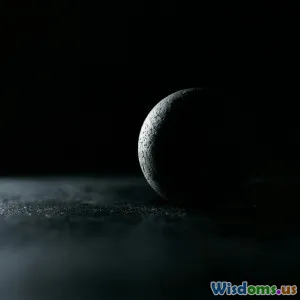
Creating Realistic Shadows in CG Animation Scenes
8 min read Explore techniques to craft lifelike shadows in CG animation, enhancing depth, realism, and immersion in digital scenes. (0 Reviews)
Creating Realistic Shadows in CG Animation Scenes
Introduction
Shadows are more than just dark shapes—they are vital visual cues that communicate depth, space, and mood. In the realm of computer-generated (CG) animation, mastering shadow creation is essential to achieving immersive realism and emotional impact. However, creating realistic shadows in CG scenes can be deceptively challenging. Simple shadows may appear flat and artificial, while overly complex methods can consume significant computing resources.
This article explores the nuanced art of crafting lifelike shadows in CG animation, combining scientific insight with practical guidance. From understanding shadow types to leveraging modern rendering techniques, you'll gain actionable knowledge to elevate your CG projects.
Understanding the Role of Shadows in Animation
Shadows do more than anchor objects—they shape perception.
- Depth and Spatial Awareness: Shadows provide vital clues about an object's position relative to surfaces and other elements.
- Mood and Atmosphere: The softness or hardness of shadows influences the emotional tone, whether eerie, dramatic, or comforting.
- Material and Surface Interaction: Realistic shadows reveal surface textures and light interaction, adding authenticity.
Animator John Lasseter stressed, "Shadows define depth and keep the world believable. Without shadows, objects float in space."
Types of Shadows in CG Animation
1. Hard Shadows
Hard shadows feature crisp, clear edges and occur with small or distant light sources. These shadows mimic midday sun or a single spotlight.
Example: A streetlamp casting sharp shadows of a bicycle's spokes in a night scene.
Characteristics:
- Distinct silhouette
- High contrast
- Simple to render
2. Soft Shadows
Generated from larger or diffused light sources, soft shadows have blurred edges. They simulate natural overcast skies or indirect indoor lighting.
Example: Morning light filtering through cloud cover, softly shadowing furniture.
Characteristics:
- Gradual edge transition
- Lower contrast
- More realistic but computationally intensive
3. Ambient Occlusion (AO)
AO simulates the subtle shadowing in crevices and corners where ambient light is blocked, adding depth to details.
Example: The shading between a book lying on a table's edge.
Characteristics:
- Not a direct shadow from a light source
- Adds realism and subtlety
4. Caustics and Translucent Shadows
These complex shadows involve light refraction and diffusion through translucent surfaces, such as glass or water.
Example: The curved shadow and light patterns at the bottom of a wine glass.
Characteristics:
- Highly realistic
- Computationally demanding
Techniques for Creating Realistic Shadows
A. Lighting Setup and Shadow Mapping
The foundation for realistic shadows lies in high-quality lighting and shadow calculation methods.
Shadow Mapping
This common technique involves rendering the scene depth from a light's perspective to create a shadow map, determining what areas receive light.
Pros:
- Fast and widely supported
- Suitable for dynamic scenes
Cons:
- Susceptible to aliasing (jagged edges)
- Requires filtering techniques for soft shadows
Tips to Improve Shadow Mapping:
- Use Percentage Closer Filtering (PCF) for soft edges.
- Increase shadow map resolution prudently to enhance detail.
B. Ray Traced Shadows
Ray tracing simulates light paths, offering highly accurate shadows with realistic penumbras and contact shadows.
Real-World Use: Pixar, with its render engine RenderMan, integrates ray-traced shadows to achieve cinematic fidelity.
Pros:
- Physically accurate
- Captures subtle shadow effects
Cons:
- Computationally expensive
- Longer render times
C. Shadow Volumes
Shadow volumes use geometric computations to extrude shadow volumes from occluders.
Advantages:
- Crisp shadows, unaffected by resolution
Downsides:
- Complex to implement
- Not ideal for soft shadows
D. Ambient Occlusion (AO) and Screen-Space Techniques
AO adds secondary shadows where ambient light gets blocked but is increasingly offered via screen-space solutions (SSAO).
Benefit:
- Enhances perceived depth without heavy performance cost.
Limitation:
- Cannot simulate direct shadowing
E. Using Light Linking and Shadow Linking
Advanced CG apps allow selective shadow casting by linking certain lights to objects, controlling how shadows behave in complex scenes.
Example: In Avatar (2009), James Cameron’s team employed selective shadow linking to maintain scene clarity and mood.
Practical Tips for Animators and CG Artists
1. Match Shadows to Real-World Lighting
Observe natural shadows around you. Note how sunlight creates hard shadows at noon but softer, longer shadows later in the day.
Technique:
- Replicate light source size and intensity
- Adjust shadow softness in proportion to light diffusion
2. Balance Realism With Performance
Prioritize methods that fit your project constraints.
Example: Indie animators might use baked shadow maps combined with AO to enhance realism without costly ray tracing.
3. Consider Scale and Density
Material properties, like translucency or roughness, affect shadow appearance.
Example: A plastic toy casts different shadows than a piece of cloth.
4. Animate Light and Shadows Harmoniously
Shadow movement should align with light source motion and scene dynamics.
Tip: Use interpolation techniques to maintain smooth shadow transitions in animated scenes.
5. Test With Multiple Angles
Render scenes from various viewpoints to ensure shadows behave consistently.
Case Studies
Pixar's Inside Out (2015)
Pixar pushed subtle shadow detail to reflect the characters’ emotions. Soft shadows enhanced wistful scenes while sharp shadows added tension.
Unreal Engine's Real-Time Shadows
UE uses ray traced shadow options paired with cascaded shadow maps for large open worlds, enabling realistic yet performant shadow rendering in games like Fortnite.
Conclusion
Shadows breathe life into CG animation scenes, transforming flat images into believable, immersive worlds. By understanding shadow types, utilizing cutting-edge rendering techniques, and carefully tailoring implementations to your project needs, you unlock new depths of realism.
Never underestimate shadows: they are a powerful language of light, forging the connection between viewer and virtual world. Experiment, study natural references, and push your skills—realistic shadows await your creative touch.
“The interplay of light and shadow is not just technical; it is poetic—it tells a story with every pixel.”
— Anonymous CG Lighting Artist
References
- Pharr, Matt, Jakob, Wenzel, and Humphreys, Greg. (2016). Physically Based Rendering, Third Edition. Morgan Kaufmann.
- Pixar RenderMan Documentation, Advanced Shadow Techniques.
- Chapman, Jonathan. (2020). Advanced CG Lighting and Shadows. CGMA Online Courses.
- Siggraph Conference Proceedings, Papers on Real-Time Ray Tracing.
Rate the Post
User Reviews
Popular Posts










